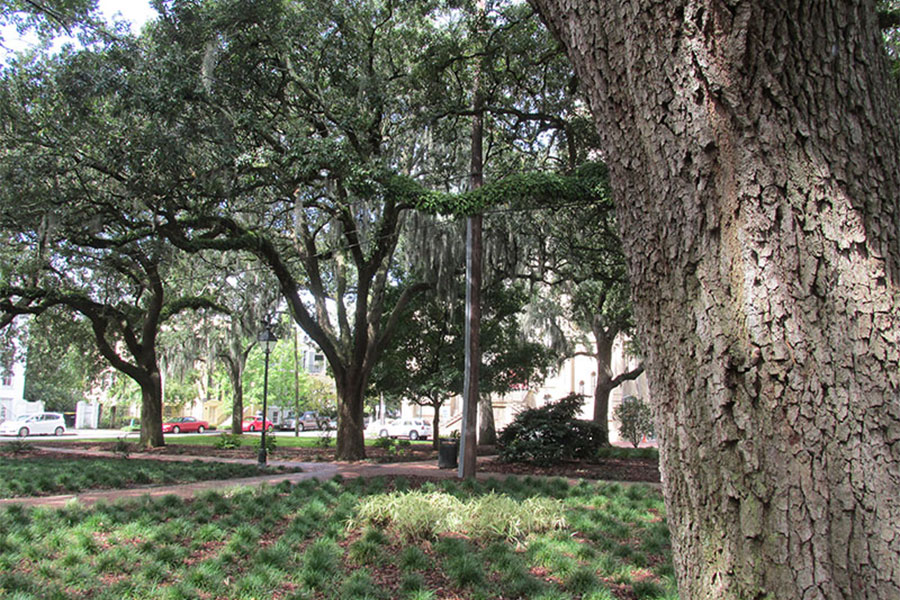Taylor Square
Savannah Squares > Taylor Square

About This Square
Photos
This square was built in 1851 and was one of the last created under the Oglethorpe Plan. It was first named for John Calhoun a South Carolina statesman and Secretary of State for John Quincy Adams and Andrew Jackson. However, Calhoun’s history as a slave owner led to the call for the square’s name to be changed and in 2023 it was renamed for Susie King Taylor, a nurse and educator who established schools for Black students after the Civil War. It marks the first time in Savannah’s history that a square has been named for a person of color.
While there are no markers or monuments in the square itself, it has the distinction of being the only square in Savannah to have all of the original buildings still surrounding it, including the Massie School, built in 1865 as the first public school in the city and now home to the Massie Heritage Center.
Another original building is the house at 432 Abercorn, which is said by many to be one of the most haunted buildings in the city (and for a city described as “the most haunted city in America” that’s saying a lot).
It was built in 1868 for Civil War veteran Benjamin Wilson on a former burial ground. There are a number of stories that are told about the house, the most infamous of which involves Wilson, unhappy about his daughter playing with the poor and African-American children from the Massie school, tying his daughter to a chair facing a window where she died two days. This story and another about a triple-murder here are not true but there have been numerous reports of ghostly sightings in the house and it has been empty for years.
Before the square was built, from roughly 1813 to 1851, the land here was used as an African-American burial ground. During the time, slaves could not be interred on the owner’s property or in public cemeteries, so they buried them in open plots of land, usually in unmarked graves. It is believed that they never bothered to move the bodies when the built the square – experts say there as many as a 1,000 people still buried here.



